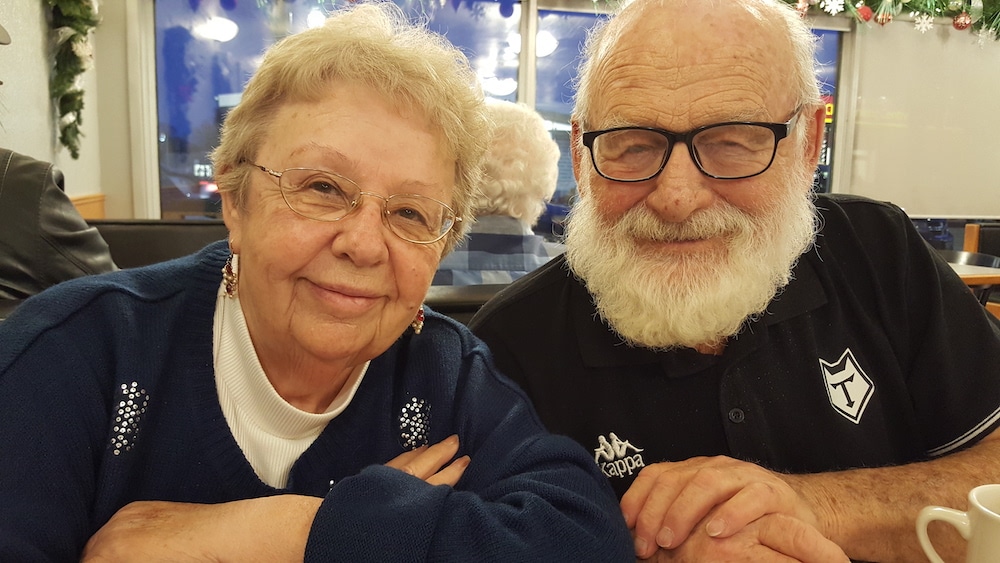
Maurice and Ilene Thevenot share their experience with virtual health care
- Blog, Health Care, Innovation, Story
- ,
Since COVID-19 emerged in Canada, governments have opened up more opportunities for patients to videoconference with their doctors or speak with them on the phone (instead of having to make in-person visits).
This change is one of many regulations that have been relaxed in order to help people, businesses and organizations (to see our report on this issue – click here).
Today we spoke with Maurice and Ilene Thevenot, two senior citizens who live two hours south west of Winnipeg, about their experience with switching some of their regular in-person appointments to telephone calls.
1) Could you tell us about your experience with the health care system changed once Covid-19 emerged?
We were getting regular appointments, seeing the local doctor and specialists in the city until the beginning of April, when lab results started being done by telephone. By May 20th, lab tests required masks and questionnaire, one person allowed into lab at a time.
At the beginning of June, dentist appointment for regular cleaning but no polishing because the rotation of the equipment would require total cleaning of the room.
Physio appointments went as normal but timed to allow for disinfecting the area used.
Phone appointments were the norm for specialists in Winnipeg. When a physical procedure was required, the biggest change was that for any information following the procedure, no one was allowed to accompany to be a second set of ears. This was a serious negative change. Each one of us depended on a younger set of ears to take notes of what was being said.
One specialist set up a secure system (Medeo) which is like live chat to the doctor’s assistant and that type of communication is a winner, no waiting for a callback after leaving a phone message, no “Press one for…, press two for… etc.” The specialist’s assistant fields the call and knows the patient’s history. When she’s asked a question she can’t answer, she finds out and gets back with an answer within a reasonable length of time.
The C.W. Wiebe Clinic in Winkler, MB, uses a secure link to advise of appointments but it seems to be directed through a type of message service, with no direct access to the clinic staff.
2) What have you found to be the benefits of speaking with your doctor’s by phone instead of in-person visits?
Nothing can replace face-to-face conversation. That being said, phone appointments mean no driving two hours, and with concerns about Covid-19, as well as winter driving conditions, often asking for one of our kids to either drive or come along for the extra pair of ears, it’s much easier.
We have been lucky enough to have one of our kids come over and be present on speaker phone and take notes.
We have felt less rushed when we need to clarify, ask questions, give feedback, during a phone appointment.
3) What would you say have been the drawbacks of speaking with your doctors by phone instead of in-person visits?
We’re human beings. We’re hardwired for preferring to see the person we’re talking to. Speaking for ourselves, we’re not yet at ease with technology such as Zoom. We tried it with some of our kids. Not smooth, but I can see that type of communication as one of the next steps.
Most importantly, a phone call from the doctor would not be a good method for conveying news of a terminal illness or one where really tough treatments, like chemotherapy are required.
On a couple of occasions, the phone appointment date was changed, so it makes it easier, it seems, for the doctor to do this.
We need to remember to prepare questions for the doctor, get future prescriptions ok’d, check on the timeline for the next appointment.
4) Are there any changes you would like to see with virtual health care tools?
At the local level, we’re never sure which of our small surrounding hospitals is the designated “emergency” location. Our regional health people have said that putting a monthly schedule on line for this is not possible because it depends on the doctor’s availability. There are occasions where a person gets sent to one hospital, finds out there is no lab tech on call so needs to go on to another hospital 15 miles away. As it is now, we depend on the phone. The virtual element doesn’t exist but a recorded message is available when calling the local hospital.
For life-threatening emergencies, calling an ambulance, they’d know where to go, we’re assuming. We’re very dependent on our local lab facility and the nurses in our small hospitals to take care of the situation or call the ambulance. We do not want to lose this service.
Our region has a lot of general information online about services available. Navigating to find the information needed though, takes a lot of reading and a lot of time.
Ontario has a system where all of a patient’s file is accessible by the patient, including the doctor’s notes about treatment, diagnosis, not edited, not cleaned up, raw and real. Nothing hidden. If this system were implemented in our area, a lot of time would be saved by a new doctor not needing to do an hour-long interview with the patient for health history, for a patient not needing to take up the doctor’s time to reassure himself about what he thinks he heard the doctor explain at his last appointment. The doctor is already typing the appointment details into his computer as we’re sitting there, so why not hit send to a secure central data bank, accessible to all involved in the patient’s care.
I can already hear the screams about privacy of information. That’s not a valid reason, that’s the excuse for not doing it. And we don’t care if there are spelling mistakes, as long as the facts are there.
We’re 80+, we’re not as savvy as our kids and grandkids when it comes to developments in the virtual communication world, as you realize by our preference for the written word. But, come on, give me a break, communication from one clinic to another is most often done by fax, far as we can see. There must be a reason, maybe not quite trusting that the information is safe, that it might disappear, who knows, but it seems like it’s out of the Middle Ages, compared to the possibilities that exist for communicating using the technologies available now.
And when you call with a specific question covered by this fax that has to do with your health, you get told the clinic receiving it has a couple of hundred to deal with, piling up beside an overwhelmed staff person. There’s got to be a better way.
You can help us continue to research and tell stories about this issue by making a donation or sharing this content with your friends. Be sure to sign up for our updates too!


